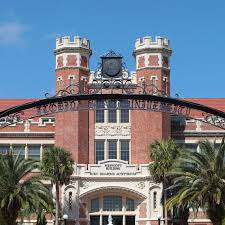Speaker
Description
A realistic description of atomic nuclei, in particular light nuclei characterized by clustering and low-lying breakup thresholds, requires a proper treatment of continuum effects. We have developed an approach, the No-Core Shell Model with Continuum (NCSMC) [1,2], capable of describing both bound and unbound states in light nuclei in a unified way. With chiral two- and three-nucleon interactions as the only input, we can predict structure and dynamics of light nuclei and, by comparing to available experimental data, test the quality of chiral nuclear forces.
We will discuss applications of NCSMC to the proton emission in 11Be β decay [3], the 2H+α [4], the p+7Be [5], and p+7Li radiative capture and the production of the hypothetical X17 boson claimed in ATOMKI experiments [6]. The 7Be(p,γ)8B reaction plays a role in Solar nucleosynthesis and Solar neutrino physics and has been subject of numerous experimental investigations while the 2H(α,γ)6Li is responsible for the 6Li production in the Big Bang. The proton emission in 11Be β decay was observed in a recent TRIUMF experiment and disproves a hypothetical neutron decay to a dark matter particle [7].
Supported by the NSERC Grants No. SAPIN-2016-00033 and SAPIN-2022-00019 and by the U.S. Department of Energy, Office of Science, Office of Nuclear Physics, under Work Proposals No. SCW1158 and No. SCW0498. TRIUMF receives federal funding via a contribution agreement with the National Research Council of Canada. This work was prepared in part by LLNL under Contract No. DE-AC52-07NA27344. Computing support came from an INCITE Award on the Summit supercomputer of the Oak Ridge Leadership Computing Facility (OLCF) at ORNL, from the Digital Research Alliance of Canada, and from the LLNL institutional Computing Grand Challenge Program.
[1] S. Baroni, P. Navratil, and S. Quaglioni, Phys. Rev. Lett. 110, 022505 (2013); Phys. Rev. C 87, 034326 (2013).
[2] P. Navratil, S. Quaglioni, G. Hupin, C. Romero-Redondo, A. Calci, Physica Scripta 91, 053002 (2016).
[3] M. C. Atkinson, P. Navratil, G. Hupin, K. Kravvaris, S. Quaglioni, Phys. Rev. C 105, 054316 (2022).
[4] K. Kravvaris, P. Navratil, S. Quaglioni, C. Hebborn, G. Hupin, arXiv: 2202.11759.
[5] C. Hebborn, G. Hupin, K. Kravvaris, S. Quaglioni, P. Navratil, P. Gysbers, Phys. Rev. Lett. 129, 042503 (2022).
[6] A. J. Krasznahorkay et al., Phys. Rev. Lett. 116, 042501 (2016).
[7] Y. Ayyad et al., Phys. Rev. Lett. 123, 082501 (2019).
| speaker affiliation | TRIUMF |
|---|

